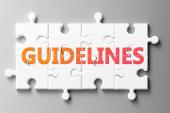JACC Dedicates Issue to Deep Dive on Latest ACS Guidelines
The aim is to “activate these guidelines in a way that they become more actionable for clinicians,” Harlan Krumholz says.

The Journal of the American College of Cardiology has introduced a new approach to promoting practice guidelines, dedicating its entire June 10, 2025, issue to the latest US guidance on ACS management released earlier this year.
The idea is to allow for greater engagement with the document and enhance understanding of the recommendations within, JACC Editor-in-Chief Harlan Krumholz, MD (Yale School of Medicine, New Haven, CT), indicated.
“I felt that the guidelines represent such an enormous investment by so many experts—the authors, commenters, and reviewers—and we end up publishing them and they come out with a flurry of activity over a short period of time. But then they sort of pass, and maybe there isn’t an opportunity to truly reflect on them—their content, the controversies, the issues they raise, the changes,” he told TCTMD.
Using a whole issue to delve into the various aspects of the document represents a “new chapter” for guidelines, he writes in a piece introducing the idea. “This format is designed to give major cardiovascular clinical practice guidelines the attention they deserve—not as an appendix to the journal’s usual content, but as a centerpiece, accompanied by thoughtful, diverse, and illuminating commentaries,” Krumholz explains.
The special issue contains the full, previously published 2025 ACS guideline from the American College of Cardiology (ACC), the American Heart Association (AHA), and other societies, as well as a “guideline-at-a-glance” paper summarizing the key features. It includes a leadership page from Cathleen Biga, MSN, RN (Cardiovascular Management of Illinois, Woodridge), immediate past president of the ACC, and others on translating guidance into practice, as well as a personal perspective from Sunil Rao, MD (NYU Langone Health, New York, NY), chair of the guideline writing committee, that gives insights into the process behind the document’s creation.
Also, some of the top names in cardiology reflect on evidence gaps, how the long-awaited update represents “a meaningful step toward global alignment in ACS care,” and historical perspectives combined with a look at the evolution of ACS guidelines over the years. Another commentary digs into “the rationale, controversies, and clinical impact of key updates, emphasizing persistent gaps in ACS management.”
Several papers explore issues within specific areas of the document. Those include lipid management, mechanical circulatory support in the setting of acute MI/cardiogenic shock, post-MI beta-blockers, use of colchicine, ticagrelor monotherapy post-PCI (here and here), choice and duration of dual antiplatelet therapy, key recommendations on antiplatelet and anticoagulant therapy, and shared decision-making.
Some of those topics contain potential points of contention, Krumholz said. “There’s no guideline without some judgment, and within the guideline itself, it’s often difficult to disentangle the recommendation from any controversy,” he said. “And so, we engaged a whole range of people who picked certain aspects of the guideline to focus on and to help surface some of these important issues.”
The issue is rounded out by international perspectives on the US recommendations from Europe, Latin America, Asia, and Australia “to try to contextualize these guidelines a little bit better in terms of global health,” Krumholz explained.
By highlighting the state of the evidence used in crafting the ACS guidelines and different expert opinions of it, “the hope was that we can now activate these guidelines in a way that they become more actionable for clinicians, more understandable,” he said. “If we spend all this time building guidelines, I think it’s critical that we build out some other kind of content that people can consume beyond sitting down and trying to read the guidelines end to end.”
This is solely an attempt to try to give greater life and vitality to the guidelines, and to help our readers relate to them and understand them and use them in better ways. Harlan Krumholz
To TCTMD, Rao said the dedication of an entire issue of JACC to discussion of the guidelines is “an interesting initiative, and I think it’s always good to debate the guidelines and talk about the individual recommendations.”
He expressed some reservations, however. “My only concern is that I hope that clinicians don’t get confused, because at the end of the day, the guidelines are [what] should be guiding clinical practice,” he said. “Some of these other things are obviously perspectives and they should be taken into account when guidelines are revised, but I hope that people don’t come away by thinking that there are some sort of conflicting kinds of recommendations.”
Overall, “it’s obviously a bold step. I think it’s great. I think it’s important,” Rao added about the initiative. “We’ll just have to make sure that people understand that the message is really still coming from the guidelines.”
He noted that the evidence base used to support the guideline recommendations continues to evolve and still contains areas of uncertainty. The “real value of an issue like this,” Rao said, is that it can point to areas in need of more research.
“At the end of the day, the guidelines are a summary of evidence and there has been critique—I think it’s been justified in the past—that many of the recommendations are not based on randomized trials,” he said, adding that in the current document, two-thirds of recommendations are based on RCTs. “We’re getting better, but we have to do even more randomized studies to really get at those evidence gaps. And issues like this really do help to highlight what those evidence gaps are.”
As examples, Rao pointed to the need to revisit different types of mechanical circulatory support in patients similar to those enrolled in DanGer Shock; further explore long-term antiplatelet therapy options as a patient transitions from an ACS to the chronic phase, as well as novel antiplatelet agents; and accumulate more data on the use of anti-inflammatory agents in ACS.
“The good news,” Rao said,” is that we’ve done a really good job of treating patients. We’ve done a good job of generating randomized evidence. The outcomes are much better than they used to be. But there still are patients who suffer bad outcomes. And so we need to continue to do those randomized trials.”
An Eye on Implementation
Translating guideline recommendations into clinical practice has been an important issue to Biga for many years. “We do a fantastic job with guidelines, but getting those guidelines to the bedside in a consistent manner . . . has always been a challenge,” she told TCTMD, adding that it’s critical that the advice is frequently updated to keep up with the evolving science and consider dissenting voices or alternative ways of looking at the issues.
“The way that Dr. Krumholz is doing this is really to be applauded, because it does a lot of different things in very precise steps,” Biga said.
Bringing in different perspectives on the guideline recommendations could lead to a “slight chance” of confusion, Biga said. But, she added, “I think we need to trust [physicians’] ability to parse through it and to figure it out for their patients,” who come from different cultures and ethnic backgrounds and are exposed to a variety of environmental conditions and social determinants of health.
Though delving into the guidelines with a special issue like JACC’s might affect the implementation of the recommendations into practice, it’s just one piece of the process. “The publication of the guidelines is just one tiny dot, honestly, on the timeline,” Biga said, adding that several steps follow.
We do a fantastic job with guidelines, but getting those guidelines to the bedside in a consistent manner . . . has always been a challenge. Cathleen Biga
Implementation of these latest ACS recommendations is probably going to be better than in the past, Rao said, “largely because we’re becoming more facile with the electronic health record and the application of artificial intelligence. I hope to see that these guidelines get implemented very, very quickly, because what we don’t want to be in is a situation where the next iteration of guidelines start coming out and we really haven’t even fully implemented the current version.”
Krumholz indicated that one of the aims of doing a deep dive on the guidelines is to help speed their adoption in practice.
“The more people engage with this vast synthesis of the literature and these ultimate recommendations about what represents best practices and understand the gray areas, the nuances, and the strength of some of the recommendations, then the more likely it is that we will be able to accelerate their application in practice and their impact in people’s lives,” he said.
This approach will be used for future guideline documents as well, Krumholz said, stressing that JACC will not be cutting back on publication of original research, which will be added to other issues to make room for these special publications.
“This is solely an attempt to try to give greater life and vitality to the guidelines, and to help our readers relate to them and understand them and use them in better ways,” Krumholz said.
Todd Neale is the Associate News Editor for TCTMD and a Senior Medical Journalist. He got his start in journalism at …
Read Full BioSources
Multiple papers. JACC. 2025;85(22).
Disclosures
- Krumholz reports, over the past 3 years, having received options for Element Science and Identifeye and payments from F-Prime for advisory roles; being a co-founder of and holding equity in Hugo Health, Refactor Health, and ENSIGHT-AI; and being associated with research contracts from Janssen, Kenvue, Novartis, and Pfizer through Yale University.
- Biga and Rao report no relevant conflicts of interest.





Comments